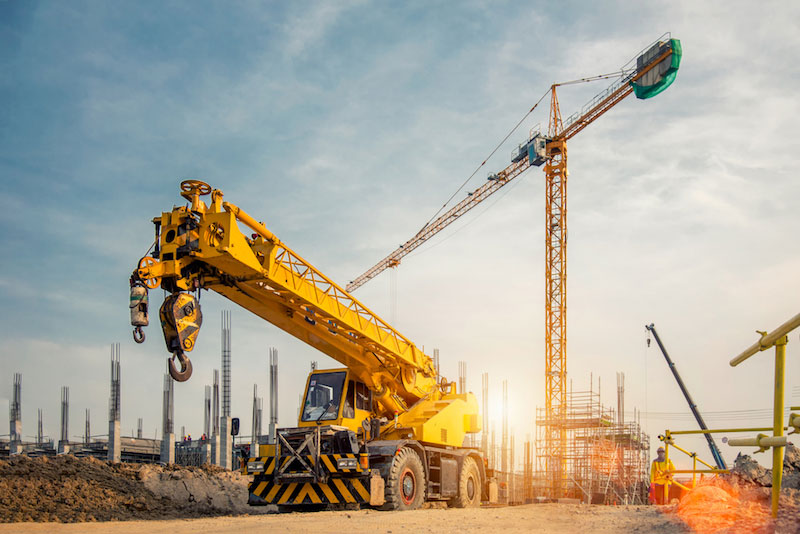Renting Vs. Buying Construction Tools: Making the Right Selection for Your Job
When getting started on a building task, one of the important decisions that forecast supervisors and stakeholders encounter is whether to rent or acquire construction equipment. Both alternatives have their drawbacks and advantages, making the choice a critical one in the job preparation process. The decision hinges on numerous variables such as expense considerations, task period, devices maintenance, danger, scalability, and flexibility monitoring. Each aspect plays a vital duty in identifying one of the most suitable course for the project's tools demands. rental company near me. Let's discover these elements additionally to recognize just how they influence the decision-making process and ultimately the success of the task.
Expense Factors To Consider
Leasing equipment frequently needs reduced first repayments compared to buying, making it an attractive choice for temporary projects or professionals with budget plan constraints. In the lengthy run, consistently renting out equipment can collect higher prices than acquiring, specifically for extended jobs.
On the other hand, acquiring building and construction devices includes greater upfront expenses yet can cause lasting savings, particularly for regular users or lasting jobs. Possessing devices gives adaptability, ease, and the possibility for resale value once the project is finished. Additionally, possessing tools enables for personalization and knowledge with specific equipment, possibly enhancing efficiency and performance on-site. Ultimately, the decision between renting and acquiring construction equipment pivots on the task's period, regularity of usage, budget plan factors to consider, and lasting monetary objectives.
Job Period

Alternatively, for long-lasting jobs or continuous building work, acquiring equipment might be the a lot more economical option. Acquiring tools can bring about set you back financial savings over time, especially if the tools will certainly be frequently used. In addition, having equipment supplies a sense of control over its accessibility and allows for modification to fit particular task requirements.

Equipment Upkeep
Offered the vital duty task duration plays in establishing one of the most cost-effective strategy in between acquiring and leasing building and construction tools, the focus now shifts in the direction of checking out the important facet of equipment upkeep. Proper upkeep is critical for guaranteeing the ideal performance and long life of building equipment. Renting out devices typically includes the advantage of having actually well-maintained equipment offered by the rental firm. This can alleviate the problem of upkeep jobs from the project proprietor or service provider, conserving time and effort. On the various other hand, possessing tools calls for a proactive method to maintenance to prevent failures, make certain security, and expand the equipment's life-span. Regular inspections, servicing, and prompt repairs are essential to keep owned devices in top working condition. Element in upkeep prices when making a decision between leasing and acquiring, as overlooking upkeep can lead to costly repair work, downtime, and project hold-ups. Ultimately, a well-maintained building devices fleet, whether leased or owned, is necessary for the successful and effective conclusion of construction jobs.
Flexibility and Scalability
In the realm of building and construction equipment administration, the facet of versatility and scalability holds substantial relevance for task performance and source utilization. Opting to rent building and construction equipment gives a high level of flexibility as it permits for the quick modification of devices types and quantities based on the developing needs of a task. Leasing allows contractors to access a variety of customized devices that might be needed for details jobs without the long-term commitment of ownership. This versatility is specifically useful for tasks with differing demands or unsure periods (construction equipment rentals).
In addition, scalability, another critical factor, is inherently connected to versatility. Leasing construction equipment uses the Check This Out advantage of conveniently scaling procedures up or down as job needs rise and fall. Professionals can rapidly include or exchange equipment to match the project's changing requirements without the constraints of possessing properties that might end up being underutilized or out-of-date. This ability to scale sources successfully can lead to expense savings and boosted task timelines, making renting out a desirable choice for jobs calling for adaptability and receptive resource allotment.
Threat Administration
Effective risk management in building tools operations is critical to making certain job success and mitigating potential monetary losses. Construction projects inherently include various threats, such as tools malfunctions, mishaps, and job hold-ups, which can significantly affect the job timeline and budget. By carefully considering the dangers linked with owning or leasing construction equipment, task managers can make informed decisions to decrease these prospective risks.
Renting construction tools can provide a degree of danger mitigation by transferring the duty of repair and maintenance to the rental firm. This can reduce the monetary concern on the project proprietor in situation of unanticipated devices failures (boom lift rental). Additionally, renting supplies the versatility to access specialized tools for specific task phases, reducing the threat of owning underutilized equipment
On the other hand, owning building and construction equipment gives a feeling of control over its use and upkeep. Nevertheless, this additionally implies birthing the full duty for repair services, maintenance expenses, and devaluation, boosting the monetary dangers related to equipment possession. Careful threat analysis and consideration of factors such as task period, equipment usage, and upkeep demands find out this here are critical in establishing one of the most appropriate option for effective threat administration in construction projects.
Verdict
Finally, when deciding between leasing and acquiring building tools, it is crucial to consider cost, project period, equipment maintenance, threat, versatility, and scalability monitoring. Each aspect plays an important duty in figuring out one of the most appropriate option for the job at hand. By very carefully examining these elements, job supervisors can make an enlightened choice that aligns with their budget plan, timeline, and total project objectives.
